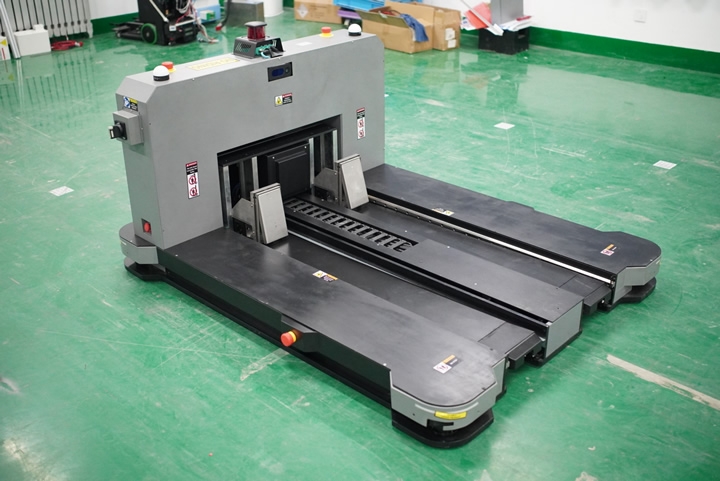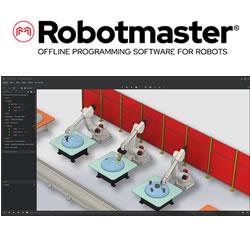What truly sets the SPT-1500UL apart is its patented E-type fork structure, which allows seamless compatibility with a wide variety of pallet types - including open pallets (nine-feet, stringer-style), as well as closed pallets, cages, and customized racks.
 The SPT-1500UL from SEER Robotics
The SPT-1500UL from SEER Robotics

Q&A with Miya Gong, Head of Global Marketing | SEER Robotics
Tell us about your product and what you feel sets it apart from similar products.
The SPT-1500UL is an upgraded model of our SPT-1000, expanding the payload capacity from 1 ton to 1.5 tons while achieving full UL certification for the North American market. It belongs to SEER Robotics’ newly released E-type closed pallet forklift series, specifically designed for warehouse and logistics environments where high-efficiency handling is required within limited space. With a top speed of 3 m/s, the robot significantly enhances material turnover efficiency.
What truly sets the SPT-1500UL apart is its patented E-type fork structure, which allows seamless compatibility with a wide variety of pallet types—including open pallets (nine-feet, stringer-style), as well as closed pallets (Japanese, American standards), cages, and customized racks. This flexibility makes it ideal for customers using mixed or non-standard load carriers, eliminating the need to procure multiple handling devices for different formats.
The robot adopts laser SLAM navigation, enabling rapid deployment without major modifications to existing infrastructure. Customers can maintain their original layout and realize “zero infrastructure transformation”, minimizing upfront investment.
Beyond hardware, the SPT-1500UL also features our proprietary AI-based deep learning algorithms, which allow the forklift to intelligently adapt to challenging operational conditions—such as misaligned, stacked, damaged, or deformed pallets—even under complex lighting. The robot can automatically adjust its forking path for precise pickup and drop-off, ensuring both accuracy and safety.
Moreover, every aspect of the vehicle—from mechanical design to obstacle recognition, load handling, and motion logic—has been reimagined for smart industrial logistics applications, offering a truly next-generation alternative to conventional forklifts.
Tell us about the R&D behind this product. Who is this product designed for? What problem is it solving?
Conventional forklifts typically use a C-type fork structure, which only works with open pallets and severely limits their compatibility in automated logistics. To break this barrier, SEER Robotics developed the E-type closed pallet forklift series to address a clear gap in the market for compact, ground-handling solutions compatible with closed pallets and diverse load carriers.
This innovative design allows seamless integration with virtually all mainstream carriers—from closed pallets and stringer/block pallets to cages and racks—enabling customers to automate their workflows without having to replace existing material carriers, which drastically reduces time and cost associated with infrastructure modifications.
SPT-1500UL is particularly suited for industries such as automotive manufacturing, logistics and warehousing, and mechanical engineering, where it handles point-to-point transport of heavy materials such as engines, gearboxes, battery packs, bulk raw materials, and finished products.
It directly addresses real-world challenges such as labor shortages, worker fatigue, and occupational safety risks. The forklift can fully replace humans in repetitive and physically demanding tasks, significantly reducing the risk of product damage, equipment collisions, or even personal injury. Its high reliability and consistency allow 24/7 autonomous operation, ensuring uninterrupted production flow, improved efficiency, and operational optimization for the customer.
Give us an idea on the installation process.
At SEER Robotics, we focus on plug-and-play deployment to help our customers implement intelligent robots with minimal friction. Our proprietary Roboshop platform plays a critical role in this, serving as a one-stop implementation tool for configuring and managing all intelligent devices embedded with our SRC controllers. Roboshop is already deployed in over 1,000 customer sites globally.
The installation process is streamlined into three main steps:
- Unpack and connect the robot to power and network;
- Use Roboshop to build maps, define stations, paths, and task sequences with a highly intuitive interface;
- Perform simulation, parameter tuning, and safety checks, after which the robot is ready to go live.
This process greatly reduces deployment time and technical barriers, enabling customers to integrate robotic automation faster and more efficiently—perfectly aligned with our mission to “make intelligent robotics accessible to all.”
How is your company setup to support the users of your products.
We offer comprehensive, full-lifecycle support to ensure that our global customers receive consistent and reliable service throughout their journey.
For localized support, SEER Robotics has established dedicated teams and facilities in key markets. In Europe, our German subsidiary provides local sales, technical service, and compliance support tailored to EU standards. In North America, we’ve set up a local manufacturing facility to enable faster delivery, localized customization, and responsive technical assistance.
We also partner with a wide network of local integrators to build a robust service ecosystem capable of providing timely on-site response and troubleshooting across multiple regions.
On the technical support side, we provide 24/7 remote service, backed by real-time monitoring and diagnostics to minimize downtime. We also offer structured training programs covering operation, maintenance, and troubleshooting, along with comprehensive bilingual documentation and an online knowledge base to empower our customers in scaling and maintaining their systems independently.
What feedback have you received from the field? Can you share a use case and the results?
We’ve received highly positive feedback across multiple industries where the SPT-1000 and SPT-1500UL have been deployed.
Automotive Manufacturing
The forklift is widely used for transporting heavy automotive parts such as engines, transmissions, and battery packs between storage zones, production lines, assembly stations, and testing areas. Its stability and precision under high-speed, lean production settings make it ideal for just-in-time workflows and 24/7 operation.
Warehousing and Logistics
SPT forklifts excel in inbound/outbound transfer, cross-zone transportation, and shelf replenishment in warehouses and distribution centers. Their ability to handle closed pallets makes them particularly effective in facilities seeking to automate previously manual handling tasks.
Mechanical Engineering
In heavy industries, these robots transport raw metal materials, large weldments, and finished mechanical components within workshops or between plant zones. They ensure safe, precise movement of goods from feeding points to processing machines and from production lines to finished goods storage.
In all these scenarios, our customers have reported improvements in operational efficiency, workplace safety, and process standardization, with a noticeable reduction in human error and overall logistics cost.
The content & opinions in this article are the author’s and do not necessarily represent the views of RoboticsTomorrow
Featured Product

